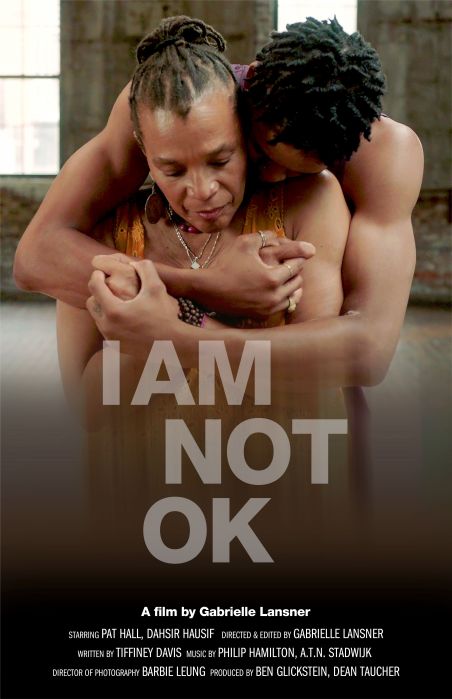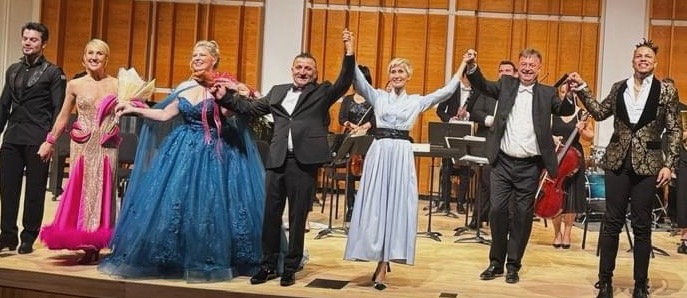
Mannequins dressed in mourning clothes and coffins in the cellar could be enough to spook anyone, but for Pi Gardiner, it’s just another day of work at the Merchants House Museum.
The 186-year-old national landmark is a destination for those seeking a darker Halloween experience. For almost 15 years, it has closed the curtains, covered the mirrors and brought out its coffins for an exhibition called "A Good Death: 19th Century Lessons in Dying Well," and a 19th-century funeral re-enactment, "Sacred to the Memory."
When the door opens at the home, which sits at 29 E. Fourth St. amid modern buildings and a vacant lot, the dim atmosphere and creaky floors greet you, followed by the intricate architectural details of the walls, ceilings and staircase.
Stripped of its deathly decor, it’s already one of the scariest places in New York City. It’s been named Manhattan’s "Most Haunted House" by The New York Times and still hears reports of strange occurrences from its visitors.
But for the month of October, it’s especially morbid … and it’s quite an undertaking.

‘A part of daily life’
"We have three coffins … it’s a long story," Gardiner said on a recent rainy Thursday at the house.
As executive director, she has inadvertently become an expert on what death and mourning were like in the 19th century. The house’s resident family, the Tredwells, lost its patriarch Seabury Tredwell in 1865 (six weeks before the assassination of Abraham Lincoln) and daughter Gertrude in 1933. Today, the Merchant House is preserved inside and out with the family’s belongings, including the daughters’ mourning dresses.
"This is not a curator’s idea of what the house should look like — this is their stuff," she said. "You’re walking into the past, and the 19th century is palpable like these people have just gone out to Broadway shopping."
In recent years, there has been more discussion about "dying well," or dying with dignity — at home with your family as opposed to in a hospital bed, for example, she said.
"Death was a part of daily life — you would die and have your funeral in your home," she said. "Death has been removed from our lives, though there seems to be a resurgence of bringing it back to the home. We want to try to build a conversation around death in the 21st century. It’s all for a good cause — facing your own mortality is a healthy thing to do."
Truly, with a coffin in the parlor and a mannequin of Seabury Tredwell dying in bed, the museum’s exhibit can force one into having that realization.
"Seabury’s face is a mask of one of our volunteers so when I see him, I say ‘Hey Robert,’ but it startles me when I walk into the room," Gardiner admitted.

Mourning in the details
When asked how she takes setting up the scene every year and having to face her own mortality this way, she laughs.
"The operative word here is ‘hilarious,’" she said. "Seabury Tredwell dies every year, and every year is about getting his knees to lay right."
And while the deathbed and the funeral parlor setup are the most visceral parts of the exhibition, it also takes time to touch on the smaller details.
Coffin plates and postmortem photographs from the Burns Archive are delicately displayed in the hallways, showing the caring and sweet way that families used to remember their lost loved ones. Modern art from Heide Hatry also is displayed, with a small display of portraits made of ash remains of the deceased lining the hallways.
The mirrors are covered with black veils, as the tradition went, "so you don’t lose your soul," Gardiner said.
Downstairs in the servants’ kitchen is a plate of funeral biscuits, which would have been made by one of the four Irish servants.
Upstairs in the attic, a servant-mannequin wears a black armband to show she’s in mourning.
But the real showstopper for most people is the funeral re-enactment, which sells out quickly each year. At 3:30 p.m. Sunday, Seabury Tredwell’s funeral will be put on by a "reverend" in the parlor with the family sitting in the front row near the casket. Actors playing the widow, Eliza Tredwell, and her children will receive guests in her bedroom and talk about how death was a constant companion in the 19th century. Another woman playing servant Bridget Murphy will pass out the funeral biscuits and tell visitors just how much work a funeral was for her.
‘I have to believe’
If you miss the re-enactment, the house is hosting a new reading, "An Evening with Edgar Allan Poe: Murder at the Merchant’s House," through Oct. 31. Actor John Kevin Jones will bring Poe back from the dead for a night to tell his bone-chilling tales.
"Songs from the Crypt," will feature 19th-century lyrics that will send shivers down your spine on Oct. 18.
On Nov. 1, Elizabeth Burns of the Burns Archive will talk about postmortem and memorial photography, and on Nov. 2, Heide Hatry and Zoe Crossland will cover contemporary and historic mourning practices.
For those who want a thrill, the house still has regular candlelight ghost tours, including a special paranormal investigation at midnight.
Gardiner says it’s possible people could experience the supernatural at these events. Visitors report seeing figures, feeling cold spots or hearing disembodied footsteps all over the house, including on the porch and in the parlor.
"Enough sane people have told me they’ve felt something that I have to believe them," she said. "I’ve worked here for almost 30 years and I haven’t seen anyone, which I’m upset about. I’ve heard and felt things but they’ve all been benevolent."


































